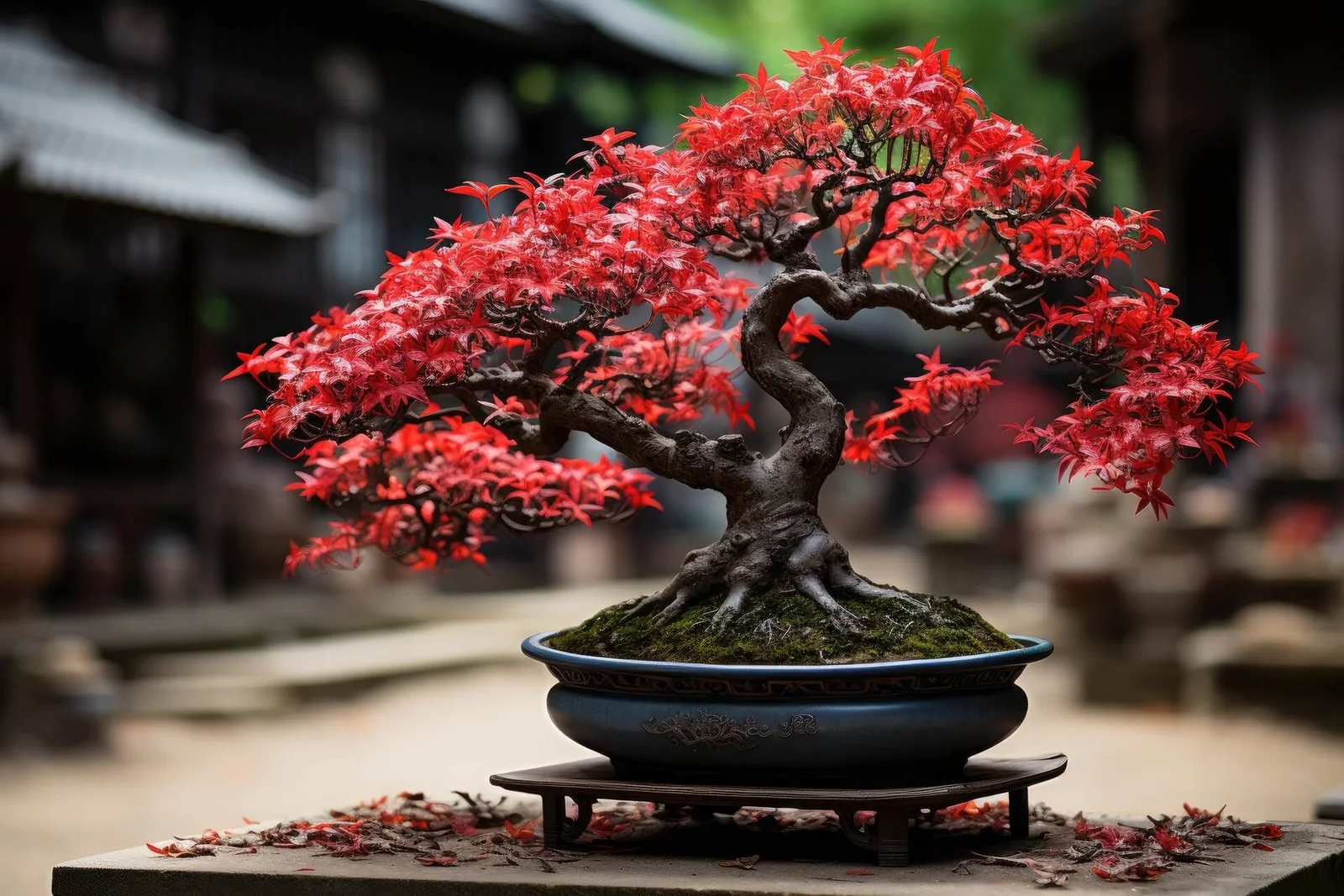Table of Contents
The Chinese Elm Bonsai is a favourite among beginners.
Native to East Asia, these semi-evergreen trees can grow up to 65 feet in the wild.But in bonsai form, they’re much smaller and easier to manage.It’s perfect for newbies because it grows slowly and is very forgiving.You get plenty of time to learn the ropes of bonsai care with this one.It’s no wonder it’s one of the most loved and easiest miniature trees to care for.
Chinese Elm Bonsai Features
The Chinese Elm has stunning, unique dark grey to reddish-brown bark. When it matures, this bark gets fissured and corky. It’s got a beautiful branching shape. Its oval-shaped leaves are delicate and toothed. These leaves showcase a fresh green colour and are delightfully tiny.The growth pattern is predictable, making it perfect for beginners.
Great for those new to Bonsai training.
Key Points:
- Distinctive Bark: Dark grey to reddish-brown, turns corky as it ages.
- Beautiful Branching: Lovely shape, easy to train.
- Delicate Leaves: Oval, toothed, and fresh green.
- Predictable Growth: Ideal for beginners learning Bonsai care.
Temperature:
Chinese Elm trees are pretty tough, but they’re not fans of drafts or big temperature swings.
For most indoor tropical bonsai, including the Chinese Elm, aim for a comfy 60-70 degrees Fahrenheit.
In the summer, feel free to let your Chinese Elm bask outdoors.
But, don’t forget to bring it inside once it dips below 60 degrees.
Lighting:
Chinese Elm needs plenty of light.
Direct morning sunlight is ideal for these miniature trees because it’s not too intense.
Tips:
- Choose a room with the most daylight.
- Be careful in warmer months: Direct afternoon sun through a window can scorch delicate leaves.
In summary, light is crucial for bonsai care, so make sure your Chinese Elm Bonsai gets enough without overdoing it.
Watering:
Chinese Elm likes its soil a bit moist but not soaked. Perfect for frequent travellers. To know when to water, poke your finger half an inch into the soil. If it feels dry, it’s time to water. Don’t let it dry out completely for long.
In winter, your Chinese Elm will need less water. In spring and summer, it might need water every day or so, depending on the location and climate. Watering cycles will vary, so don’t stick to a strict schedule.
Tips:
- Check the foliage.
- Test the soil with your finger.
- Weigh the pot. The lighter it feels, the drier it is.
Use a water mister a couple of times a week to help with humidity. Misting helps but doesn’t replace watering. Elevate your pot on pebbles to keep the roots from sitting in water and prevent root rot.
The Haws Watering Set, including a watering can and professional mister, is great for giving your Chinese Elm the right amount of water.
Fertilizing Your Chinese Elm Bonsai
Fertilizing your Chinese Elm Bonsai is key during the growing season—spring through fall.
Here’s how to do it:
- Every two weeks: Use a bonsai-specific or organic fertilizer.
- Pre-water: Always water your tree well before fertilizing.
- Try this: Use Neptune’s Seaweed (0-0-1), an organic supplement packed with over 60 naturally occurring nutrients and amino acids.
These steps will keep your miniature tree healthy and thriving.
Pruning and Training Your Chinese Elm Bonsai
Pruning is crucial for keeping your Chinese Elm Bonsai in shape and promoting new growth.
Here’s what you need to do:
- Pruning: Regularly trim small branches, buds, and new shoots.
- Chinese Elm Bonsai: Perfect for beginners. You can prune its branches all year round.
- New Shoots: Let them grow to eight leaf pairs, then trim them back to two or three.
Wiring Tips:
- Timing: Wire branches anytime throughout the year.
- Shoots: Only wire them once they’re slightly woody.
The Chinese Elm Bonsai naturally fits the classic umbrella shape but can be styled in various ways with proper pruning.

Insects / Pests: Chinese Elm Bonsai
Chinese Elm Bonsai can attract the same pests and diseases as your average houseplants.
The best defence? Keep your bonsai clean and healthy.
Dust-free leaves ensure proper circulation.
Notice any unusual leaf drop, sticky leaves, or visible insects? Act fast.
Here’s what to do:
- Mix 1 tsp dish soap with 1 quart of tepid water or use Neem oil spray.
- Spray your bonsai until the mixture runs off the leaves.
- Rinse the solution off with plain water.
- Repeat every few days as needed.
Chinese Elm Bonsai Propagation Guide
- Snip and Root:
- Take 6-inch cuttings from a Chinese Elm using sharp, clean scissors during summer.
- Pop them in a glass of water and watch roots sprout in no time.
- Planting the Roots:
- Once rooted, transfer the cutting into a pot with quality bonsai soil.
- Mix up 2 parts loam, 1 part peat moss, and 1 part sand for the perfect blend.
Keep it simple, and you’ll soon have a thriving Chinese Elm bonsai ready to charm!
Repotting Chinese Elm Bonsai
- When to Repot: Chinese Elm Bonsai should be repotted every two years, ideally in early spring.
- Handle with Care: Avoid extensive root pruning as Chinese Elms may not respond well to drastic changes.
- Post-Repotting Care: After repotting, water thoroughly and place the bonsai in a shady spot for a few weeks to promote root growth.
Additional Chinese Elm Bonsai Care Tips
- Chinese Elm Bonsai: Tough Enough to Handle Your Mistakes!This bonsai is forgiving—it can handle overwatering, underwatering, and temperature shifts like a champ.
- Keep Your Indoor Jungle Smoke-FreeJust like people and pets, bonsai trees like a clean environment. Second-hand smoke isn’t their jam. Clean air means happier bonsai and healthier oxygen for your home.
▶Click Here to download this article as PDF







One response to “How To Care And Grow CHINESE ELM BONSAI”
[…] Chinese elm […]